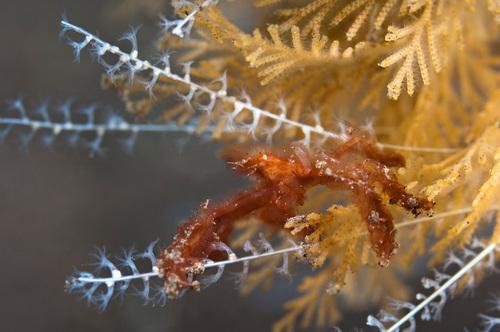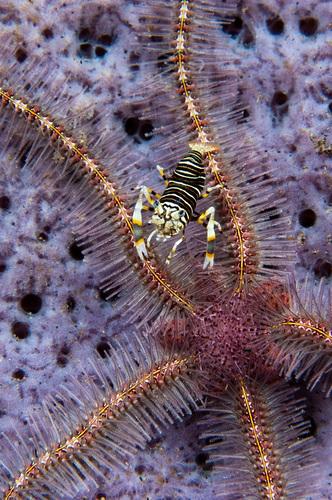Zebra crabs, Zebrida spp., are minute crustaceans that live entirely on certain species of sea urchins on coral reefs in a close association known as commensalism.
In commensalism, only one associate appears to benefit, while the other neither gains nor loses. In this case, the crab gains protection from predators, living amid the spines of its host. They have hooks on the tips of their legs to help them cling to the urchin’s spines.
Zebra crabs seem to be completely dependent on their urchin hosts as they are not found anywhere else. They may benefit their host by removing parasites and debris, but these urchins can also exist without their zebra crab commensals.
Other types of associations include parasitism, in which the host is harmed or possibly killed, and mutualism (sometimes called symbiosis) in which, both partners benefit from the relationship, for example at cleaning stations on the reef.
Zebra crabs exhibit sexual dimorphism with females being larger than males. They may live singly or in pairs on an urchin.
Another type of crustacean, the Coleman’s shrimp (Periclimenes colmani), lives in commensalism with the toxic fire urchin (Asthenosoma varium). The shrimp removes stinging arms from a patch on the poisonous host’s surface to create a safe place to live.
Coleman shrimps are typically found in pairs with the female being larger.
Matthew Oldfield is a freelance photographer based in Bali, Indonesia, specializing in editorial and documentary images from both above and below the waves. He works primarily with charities, NGO’s, and other organizations working to conserve the environment, endangered species, and disappearing cultures.








